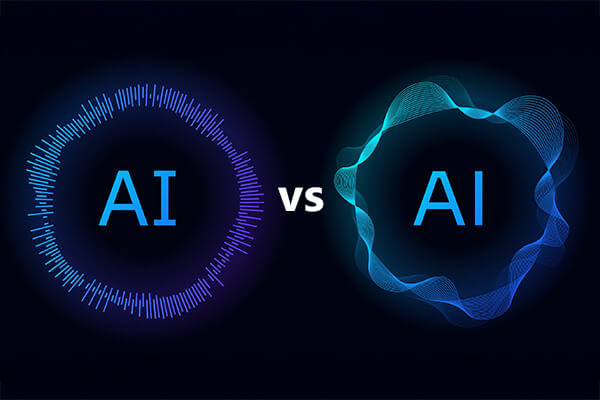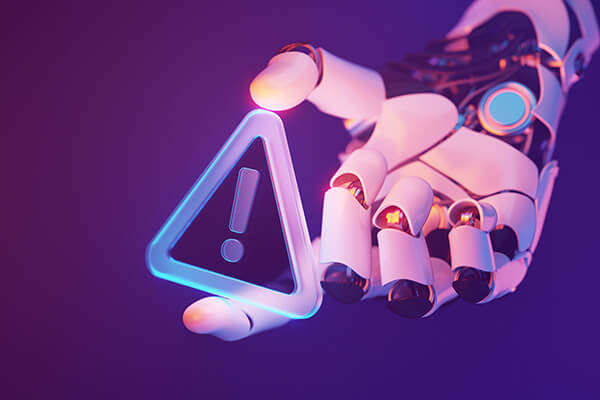Agentic AI vs. Traditional AI: What’s the Difference and Why It Matters
Employer Insights, Industry News

Artificial intelligence is no longer a future concept but has instead become a present-day business driver. From chatbots to predictive analytics, organizations have been using AI to automate tasks and optimize operations for years. But a new frontier is gaining traction: agentic AI.
Unlike traditional AI, which follows predefined rules or makes predictions based on training data, agentic AI has the ability to autonomously plan, act, and adapt toward goals with minimal human intervention. For businesses and other organizations, this shift represents not just an incremental upgrade but a transformational leap in what AI can do.
Traditional AI: Powerful, but Limited
Traditional AI systems are excellent at pattern recognition, prediction, and automation. For example, a recommendation engine on an ecommerce site can analyze purchase history to suggest products, and a fraud detection system can flag unusual transactions.
However, these systems are narrow in scope. They rely heavily on human input to define tasks and parameters. They can tell you what’s likely to happen, or process data at scale, but they can’t make independent decisions beyond their programming.
Agentic AI: A New Level of Autonomy
Agentic AI goes further by combining reasoning, planning, and execution into one system. Instead of simply responding to input, agentic AI can set sub-goals, learn from feedback, and adjust its actions dynamically to achieve an overarching objective. For example:
- In customer service, an autonomous AI agent could resolve complex multi-step issues by pulling data across systems and coordinating responses, all without human escalation.
- In supply chain management, agentic AI could negotiate with vendors, adjust procurement strategies in real time, and optimize inventory levels as conditions shift.
- In IT operations, agentic AI could detect system inefficiencies, implement fixes, and continue to self-optimize without waiting for manual updates.
This level of autonomy makes agentic AI a powerful partner for organizations looking to streamline operations and respond to change faster.
Why the Difference Matters
The distinction between traditional AI and agentic AI is more than technical. It’s strategic:
- Scalability: Agentic AI can manage tasks at a scale and speed that far exceed human capacity, opening the door to efficiencies traditional AI can’t deliver.
- Adaptability: While traditional AI is locked into its training, agentic AI can dynamically adjust strategies in response to new data or unexpected events.
- Innovation: Agentic AI enables entirely new use cases that weren’t possible with rule-based AI alone, such as autonomous DevOps tools to self-optimizing customer experiences.
For decision-makers, understanding the difference helps clarify where AI can add immediate value today, and where emerging technologies can prepare your organization for tomorrow.
Preparing for the Shift
Embracing agentic AI doesn’t mean discarding your existing AI investments. Instead, it’s about building readiness for the next wave of innovation. Practical steps can include:
- Assessing Current AI Use: Identify areas where traditional AI is delivering results as well as where autonomy could create greater impact.
- Investing in Infrastructure: Ensure systems are scalable, secure, and flexible enough to integrate more advanced AI agents.
- Focusing on Governance: Establish ethical frameworks and oversight mechanisms to manage autonomous AI responsibly.
- Partnering with Experts: Work with professional services providers who understand both traditional and agentic AI, and can guide your organization through safe and strategic adoption.
AI is Evolving, and So Should You
Traditional AI helped many organizations take the first big leap into automation and intelligent decision-making. Agentic AI represents the next leap, one where AI not only analyzes data but acts on it, adapts, and drives outcomes independently.
For forward-looking organizations, the difference can mean a solid competitive advantage. Those who prepare for agentic AI today will be better positioned to innovate, reduce costs, and respond to tomorrow’s challenges faster than the competition.
Ready to Experience Agentic AI?
Our team of experts can help you identify the best use cases, pilot agentic AI solutions, and seamlessly integrate the solutions you need into your existing systems. Get in touch today to learn more about how agentic AI can drive efficiencies across your organization.
Share This Article
Contact Us
We’re here for you when you need us. How can we help you today?




